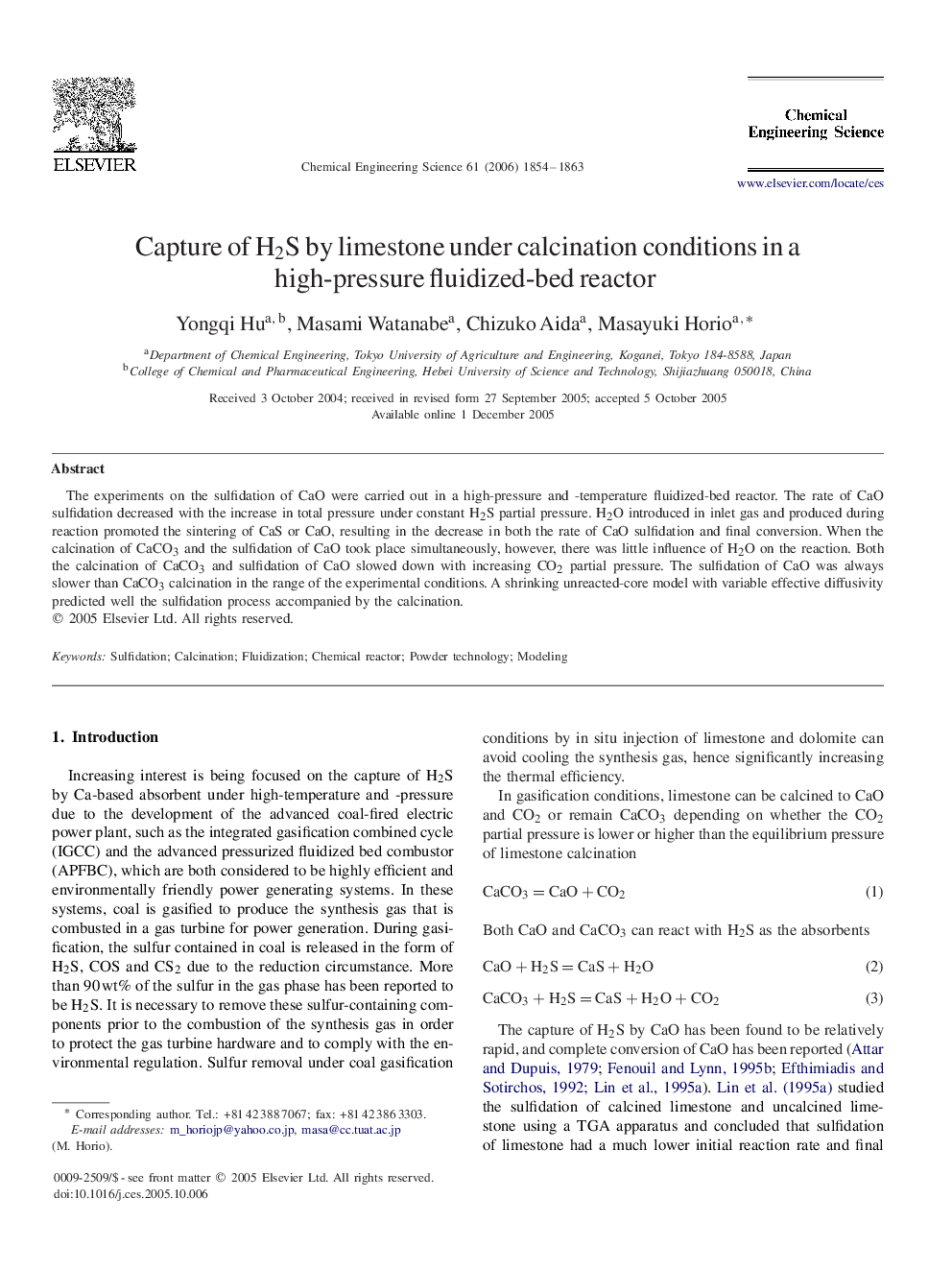| Article ID | Journal | Published Year | Pages | File Type |
|---|---|---|---|---|
| 160920 | Chemical Engineering Science | 2006 | 10 Pages |
The experiments on the sulfidation of CaO were carried out in a high-pressure and -temperature fluidized-bed reactor. The rate of CaO sulfidation decreased with the increase in total pressure under constant H2SH2S partial pressure. H2OH2O introduced in inlet gas and produced during reaction promoted the sintering of CaS or CaO, resulting in the decrease in both the rate of CaO sulfidation and final conversion. When the calcination of CaCO3CaCO3 and the sulfidation of CaO took place simultaneously, however, there was little influence of H2OH2O on the reaction. Both the calcination of CaCO3CaCO3 and sulfidation of CaO slowed down with increasing CO2CO2 partial pressure. The sulfidation of CaO was always slower than CaCO3CaCO3 calcination in the range of the experimental conditions. A shrinking unreacted-core model with variable effective diffusivity predicted well the sulfidation process accompanied by the calcination.
